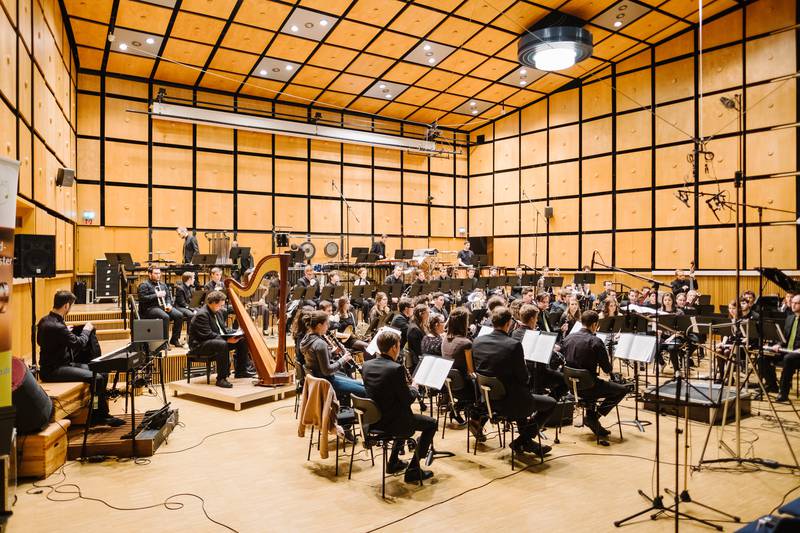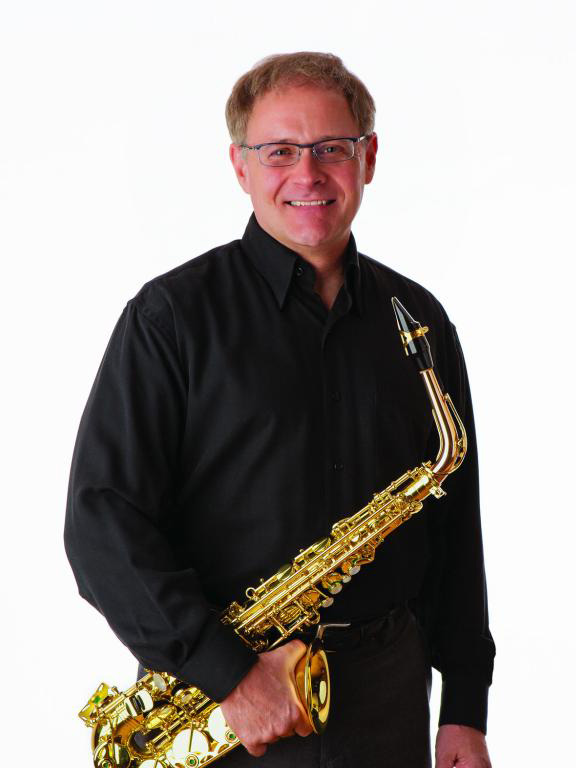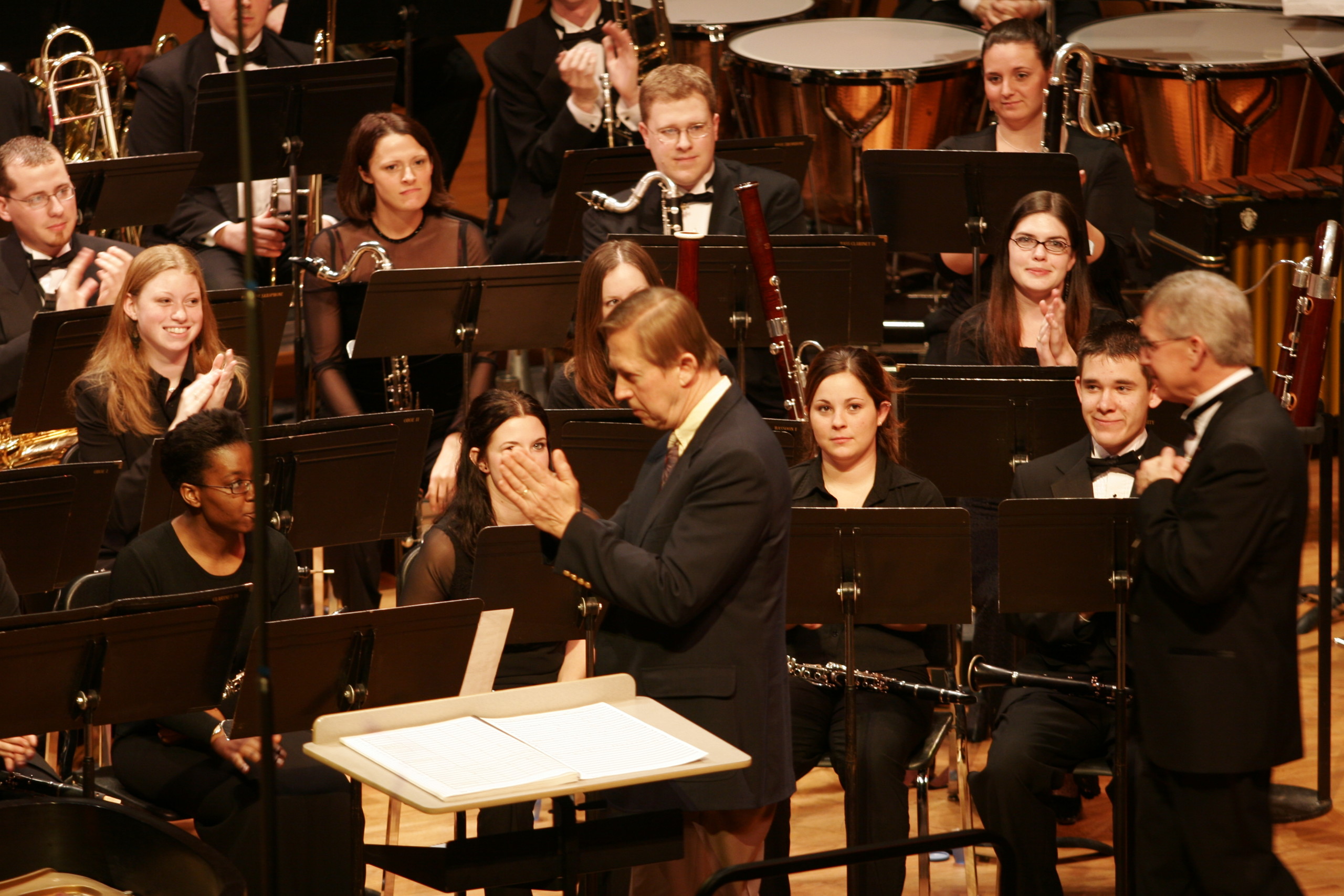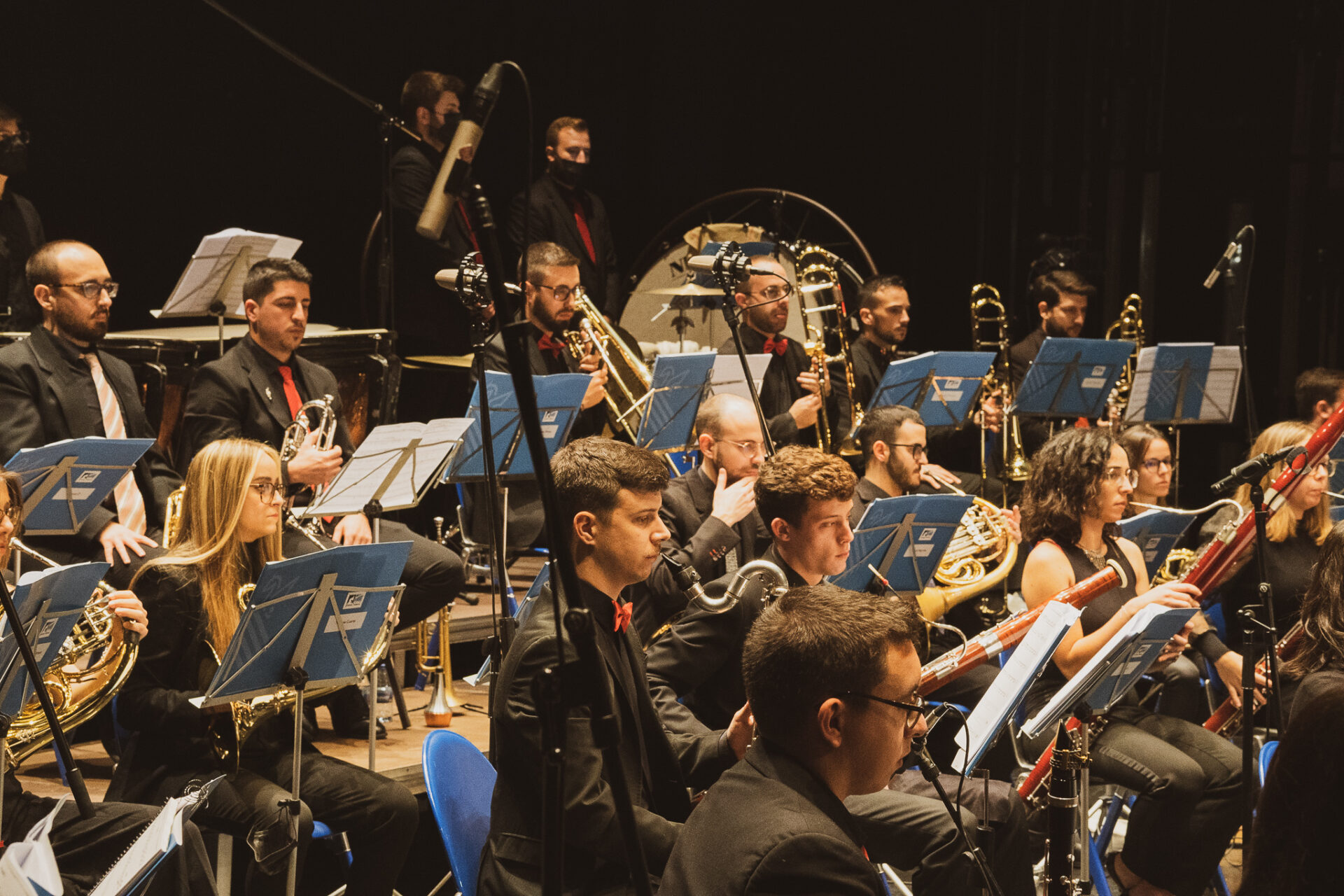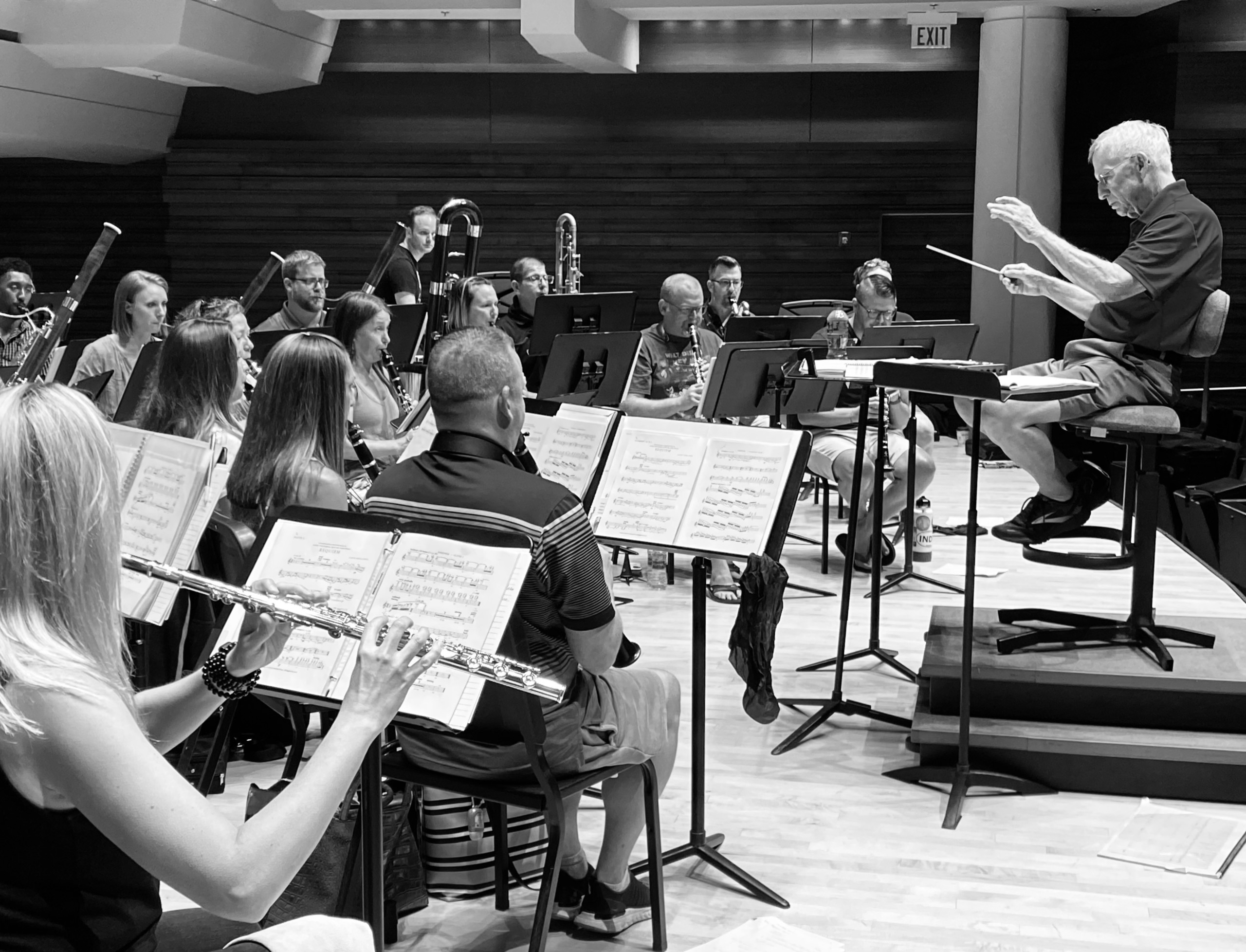Maslanka Weekly highlights excellent performances of David Maslanka’s music from around the web.
From The LandesJugendBlasOrchester’s website:
The LandesJugendBlasOrchester Rhineland-Palatinate mainly works on contemporary original wind literature to present to the public in concerts at home and abroad. Under the sponsorship of the Bundesland Music Council, the ensemble also supports talented young people from Rhineland-Palatinate in the field of symphonic wind music.
Around 65 musicians from all parts of the Bundesland meet for two work phases per year and smaller projects. Under the guidance of experienced teachers and conductors, the concert program is designed in separate rehearsals in which the orchestra is initially divided into seven groups. Eventually the woodwinds, brass, and percussion come together for full-ensemble rehearsals with the chief conductor Stefan Grefig, and the program is given finishing touches and is further developed until it is ready for the concert. The musicians gain valuable experience in orchestral and chamber music, which is intended to provide decisive impulses for their musical development, especially for those who otherwise play in smaller orchestras.
The most talented young musicians in Rhineland-Palatinate combine to form an excellent orchestra that gives concerts at a high level. Talent screening in music clubs and music schools and a selection process with an audition at the University of Music in Mainz guarantees permanent quality in the ensemble. Former members of the LandesJugendBlasOrchester can be found in the ranks of large professional orchestras and in Germany’s institutions of higher learning.
The orchestra specializes in matters of symphonic wind music in Rhineland-Palatinate and beyond. It is always trying to set a good example for the musical associations in the country. Excellent musical prerequisites, combined with youthful enthusiasm and a professionally working organizational environment enable a lively sound image of the current wind symphony.
This week, we feature Stefan Grefig and the LandesJugendBlasOrchester in a new magnificent performance of Symphony No. 10: The River of Time, and a classic performance of Traveler.
Symphony No. 10: The River of Time
From Matthew Maslanka’s program note:
Symphony No. 10 was commissioned by a consortium headed by Stephen K. Steele, Scott Hagen (University of Utah), and Onsby Rose (The Ohio State University). My father passed away while writing the work. I completed the composition based on his sketches.
Dad wrote about the origins of the symphony:
The work began as always with meditation: “Show me something I need to know about the piece I am going to write.” Here is the first image that came:
The Holy Mother takes me sliding down a rocky mountain slope, all loose small rocks. It’s a wild stony country, very little vegetation, many beautiful colors in large rock formations, brilliant sun. We find a large pool nestled among tall vertical rock faces. The water is turquoise blue. We go into the pool and swim/flow downward, rising again toward a circle of light. At the surface is a “divine” place of craggy multicolored rock faces. A voice speaks my name and says, “You are ready, receive what wants to come through…We are here. You go and do.”
And the second from a few days later:
I am met by the Holy Mother in the guise of an 18-year-old Swiss farm girl – blond, pretty, traditional dress. I am shown various views of the earth and the oceans. The earth is clean, the oceans are clean. Humans have come into balance with the earth and are happy. The farm girl shows me a farm full of milk cows. The world is still technological but we are living an agrarian life, I am shown a large beautiful auditorium where music is being made. The girl thanks me for what I have done to make this new world possible. This is an odd thought for me to accept.
Then came the usual problem of composing. “I” desired to write an important piece. In my vague imagination, it was like one of the big symphonies of Dimitri Shostakovich, my favorite modern symphonist. But my inner compass kept dragging me away from that and pulling me back to the humble world of the chorales. A pattern began to emerge of a chorale and a response, the response being the evolution of a radically simple, intimate, and beautiful melody. This process kept repeating itself until half a dozen of these melodic pairings began to emerge – all simple, beautiful, personal, not “important.” At each step, I continually questioned whether this was the symphony that needed to be: “Really? Seriously? This is what you want me to do?” – yes. Finding the structural line for the whole piece was extremely difficult. At a certain point, I sensed that a large movement wanted to happen, but it existed only as a hard little node that had begun to rise to consciousness.
At the time of his death, my father had fully completed the first movement and half of the second. The remainder of the second movement and the whole of the fourth movement were sketched out. The third movement (“the hard node”) had an opening sketched, but the rest was in fragments. Dad asked me to finish the work if he were unable to complete it. I drew on my long experience working with dad and his music to first understand the sketches and then to piece them together.
Dad titled the completed first movement after his wife and my mother: “Alison.” He was writing as my mother was dying of an immune disorder in the spring of 2017. This movement may be seen through that lens, with bitter rage at the coming loss and a beautiful song full of love.
I have named the subsequent movements. The second movement’s title, “Mother and Boy Watching the River of Time,” comes from my father’s final pencil sketch of the same name. It depicts two small figures sitting on a riverbank in front of a forest and mountain foothills. The music is largely a transcription of the second movement of the euphonium sonata he wrote for me, Song Lines.
The third movement posed a special challenge. The movement was both at the emotional center of the symphony and the least finished. One tune, marked “The Song at the Heart of it All” in the sketch, became the heart of the work and of the symphony. The full statement of the theme may be found at bar 174, with a quiet restatement in the solo euphonium at bar 217. It is a pure expression of love: my love for my father, his love for me, my mother, sister, and brother, and by extension, love for humanity. The restatement of the opening material, though at first comforting, becomes jarring and unsettled, rising to a dissonant roar. The euphonium soloist is left to scream, “why?!” at a world that seems content to keep spinning.
The third movement became my response to the deaths of my mother and father. It is not what dad would have written; rather, it is a synthesis of my mind and his, colored by extraordinary pain and loss. I have named the movement after my father.
The fourth movement, “One Breath in Peace,” is the acceptance and ability to move forward after loss. The long solo lines for oboe reflect and extend the bookending chorale, “Jesu, der du meine Seele.” Dad’s customary morning practice was to play one chorale from the Bach 371 Chorales. He would sing each line as he played along on the piano. In this way, he came to deeply understand these miniature jewels of western music. I have closed the symphony with the last statement of the chorale, with the pianist singing the tenor line. I hope you will hear his voice in it.
Watch below as Stefan Grefig leads the LandesJugendBlasOrchester in a new magnificent performance of the entirety of Symphony No. 10. (By the way, these are Jugend! Bravo!)
More info
- Symphony No. 10: The River of Time @ davidmaslanka.com
Traveler
From David’s Program Note:
Traveler was commissioned in 2003 by the University of Texas at Arlington Band Alumni Association, the Delta Sigma Chapter of Kappa Kappa Psi and the Gamma Nu Chapter of Tau Beta Sigma, in honor of the career contributions of Ray C. Lichtenwalter, retiring Director of Bands at UT Arlington. Ray has been a close friend and champion of my music for many years, and it was a great pleasure for me to writ this piece for his final concert.
The idea for Traveler came from the feeling of a big life movement as I contemplated my friend’s retirement. Traveler begins with an assertive statement of the chorale melody “Nicht so traurig, nicht so sehr” (“Not so sad, not so much”). The chorale was not chosen for its title, although in retrospect it seems quite appropriate. The last part of life need not be sad. It is an accumulation of all that has gone before, and a powerful projection into the future – the potential for a tremendous gift of life and joy. And so the music begins with energy and movement, depicting an engaged life in full stride. At the halfway point, a meditative quiet settles in. Life’s battles are largely done; the soul is preparing for its next big step.
In our hearts, our minds, our souls
We travel from life to life to life
In time and eternity.
Watch below as Stefan Grefig leads the LandesJugendBlasOrchester in a classic performance of this work.
More info
- Stefan Grefig
- LandesJugendBlasOrchester
- Traveler @ davidmaslanka.com
We would love to hear from you! If you know of any outstanding performances of David Maslanka’s music on the web, please email us at maslankaweekly@maslanka.org.
